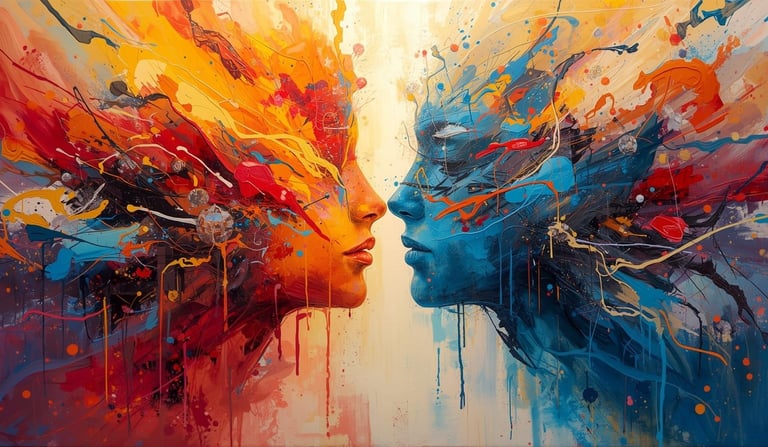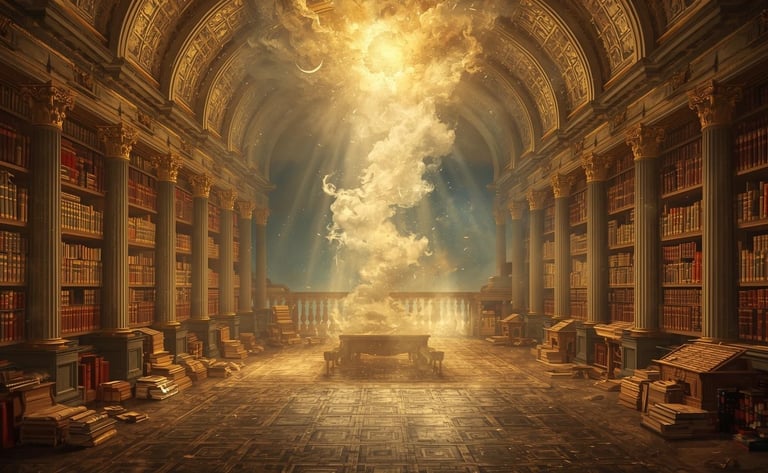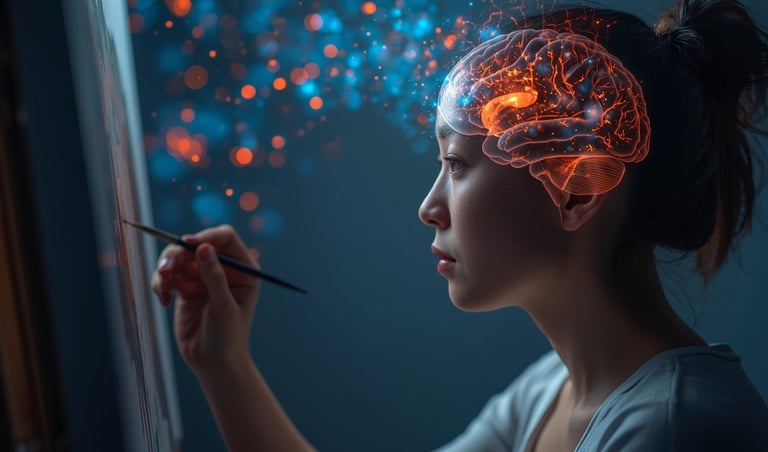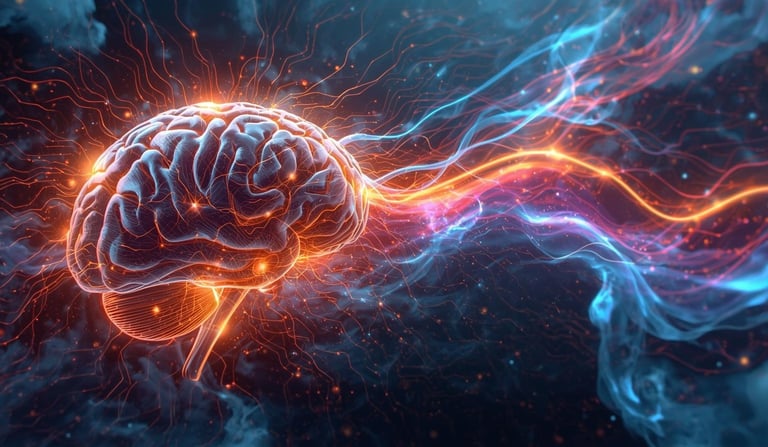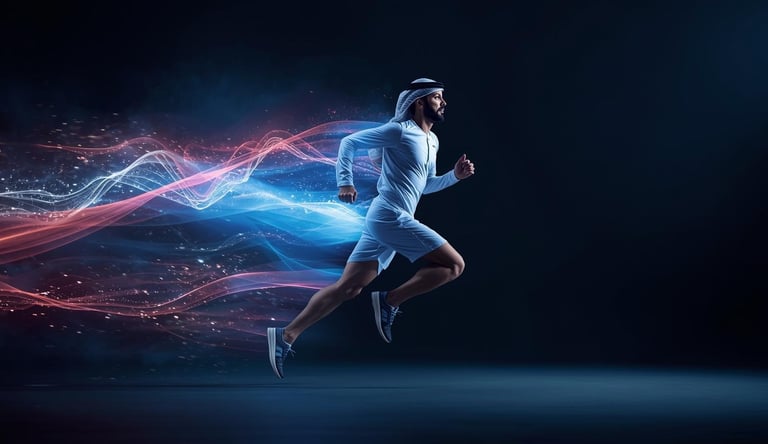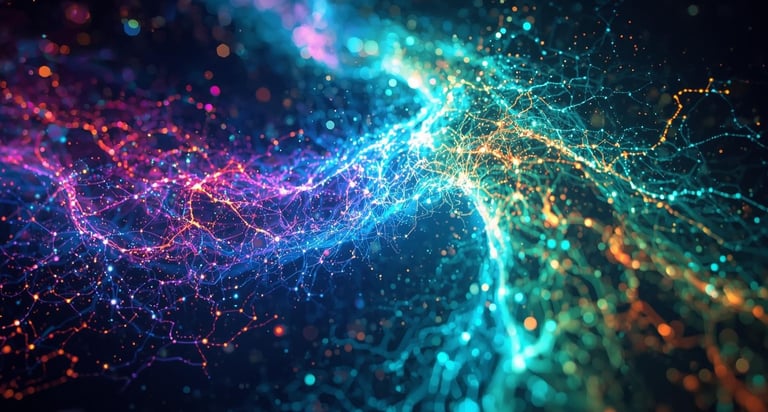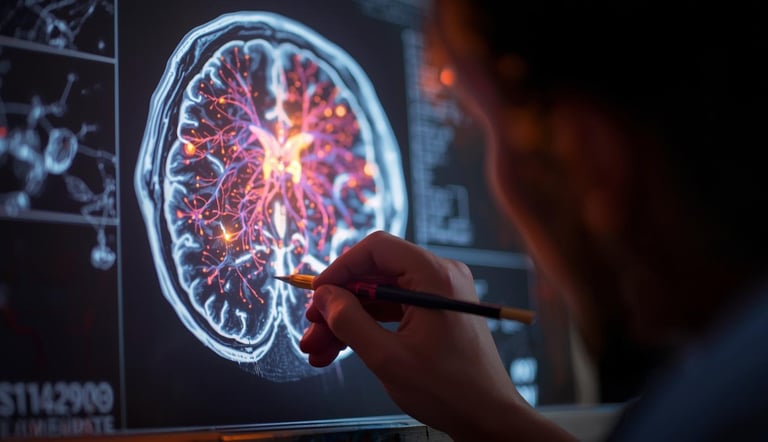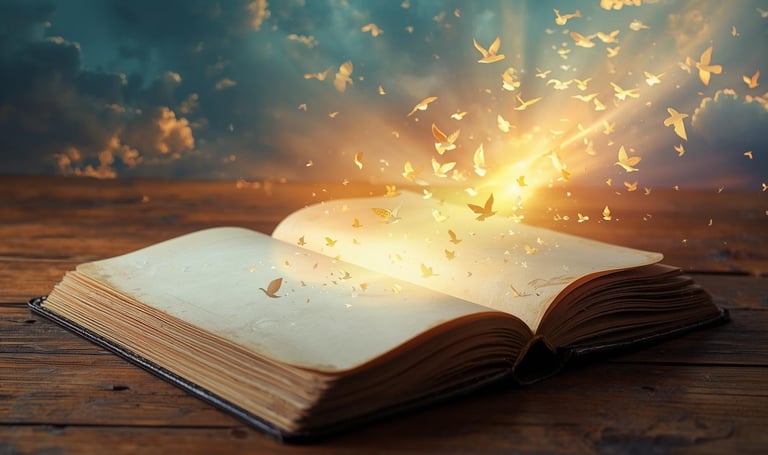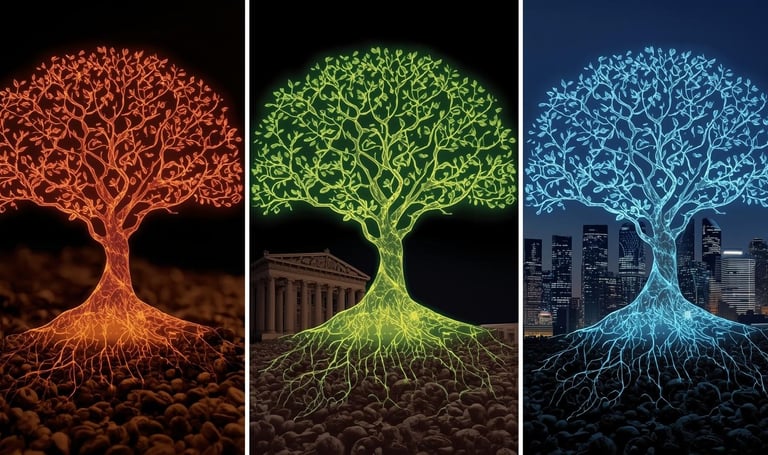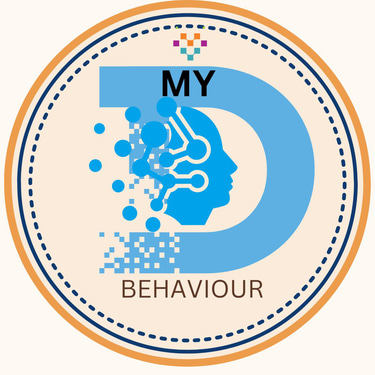Cognitive Pathways: The Brain Science Behind Creative Flow
“Discover how your brain unlocks the flow state and transforms creativity into timeless, immortal ideas. Part 2
Gajanan L. Bhonde
9/26/202513 min read


Understanding the Neuroscience of Creativity
Creativity is a complex cognitive process rooted in various neurobiological mechanisms within the brain. Two significant regions play vital roles in fostering creativity: the Default Mode Network (DMN) and the prefrontal cortex. The DMN, associated predominantly with daydreaming, mind-wandering, and self-referential thoughts, becomes highly active during periods of introspection and imagination. This network facilitates divergent thinking, a cognitive process that generates multiple ideas or solutions to open-ended problems. By engaging the DMN, individuals tap into a wellspring of potential creative concepts, often leading to innovative breakthroughs.
Contrastingly, the prefrontal cortex is primarily responsible for executive functions such as decision-making, problem-solving, and idea evaluation. This region helps refine the creative output generated by the DMN, enabling individuals to filter through numerous possibilities and select the most viable options. The synergistic interplay between the DMN and the prefrontal cortex is crucial for the creative process, as it allows for the seamless transition from idea generation to implementation. For instance, while the DMN may suggest a plethora of artistic directions, the prefrontal cortex ensures that the chosen path aligns with the desired goals.
Research indicates that engaging in practices that promote creative thinking can enhance the brain's ability to forge new connections, thereby improving overall cognitive flexibility. Activities such as brainstorming, free writing, or even engaging in mindfulness practices encourage creative flow by stimulating both the DMN and prefrontal cortex. Moreover, understanding the roles of these brain regions provides valuable insights into the nature of creativity and highlights the neural underpinnings that contribute to artistic expression. This knowledge not only enriches our comprehension of creativity but also empowers individuals to harness their creative potential more effectively.
The Flow State: An Exploration
The flow state, often described as being "in the zone," refers to a mental state in which individuals become fully immersed in an activity, resulting in heightened focus and creativity. This concept was first introduced by psychologist Mihaly Csikszentmihalyi, who identified flow as a profound experience characterized by complete absorption in what one is doing. Within this state, people commonly report a sense of clarity regarding their goals, a distortion of temporal perception, and an intrinsic reward that emerges from the activity itself.
From a psychological standpoint, the flow state arises when there is a balance between the challenge presented by a task and the skill level of the individual. When these two elements are aligned, the individual experiences a sense of control and engagement that fosters creativity. Physiologically, the brain exhibits unique patterns during flow; various neurochemical changes occur, including the release of dopamine, norepinephrine, and endorphins, contributing to a feeling of euphoria and increased cognitive function.
Illustrative examples abound, showcasing how creatives across disciplines can enter this state. Musicians may experience flow during performance, losing track of time as they become fully attuned to their instrument and surroundings. Similarly, visual artists often find themselves engrossed in the act of creation, where the physical act of painting can lead to an almost meditative state. Research has indicated that such experiences of flow not only contribute to individual satisfaction but also significantly enhance productivity and innovation in artistic endeavors.
Understanding the flow state sheds light on its vital role in fostering creative expression and productivity. Practitioners and creatives alike can benefit from recognizing the conditions conducive to flow, ultimately integrating this understanding into their work methodologies to elevate their creative processes.
The Synergy of Emotions and Intelligence
Understanding the interplay between emotions and cognitive intelligence is crucial for unpacking the mysteries of creativity. The notion that emotions can significantly influence one’s creative capabilities is supported by various psychological theories. Emotional experiences, ranging from joy to melancholy, offer raw material from which individuals can derive inspiration. When one combines emotional intelligence—the ability to perceive, use, and manage feelings—with cognitive intelligence, the landscape of creative expression begins to flourish.
For instance, theories such as the Dual Process Theory suggest that two systems govern human thought: one that is rapid and intuitive, heavily influenced by emotions, and another that is slower and more deliberate, often linked to logical reasoning. In the context of creativity, the first system can lead to spontaneous bursts of innovation, driven by emotional reactions. This emotional undercurrent can contribute to the establishment of enduring patterns in the realm of artistic endeavors, often termed as 'immortal' expressions of creative genius.
Research further indicates that individuals with high emotional intelligence are more likely to engage with their feelings thoughtfully. Such engagement allows for a richer tapestry of inspiration, as these individuals can leverage their emotions to guide problem-solving processes and inventive thought. Embracing a spectrum of emotional experiences can facilitate a deeper connection to one’s creative self. For example, artists often draw upon their sadness or joy, converting these feelings into unique forms of expression that resonate with others.
The integration of emotional and cognitive intelligence is essential in enriching the creative experience. Those who cultivate awareness of their emotional processes may find themselves unlocking creative potential that remains dormant in others. Thus, understanding how emotions influence creativity not only broadens the perspective on artistic expression but also enhances the overall appreciation of the complexities inherent in the creative flow.
Case Studies: Legends of Creativity
Throughout history, some individuals have demonstrated exceptional creative abilities, allowing them to produce their most innovative works. This section delves into the creative processes of iconic figures such as Wolfgang Amadeus Mozart and Pablo Picasso, uncovering how they accessed their flow states and the significant impact this had on their artistic outputs.
Mozart, an influential composer of the Classical era, was known for his extraordinary musical talent from a very young age. His ability to enter a state of flow was evident in his prolific output, which included over 600 works. Accounts suggest that Mozart would often compose entire pieces in one sitting, sometimes scribbling notes at an astonishing pace. This intensity of focus allowed him to tap into his innate creativity, producing compositions that continue to resonate with audiences today. Notably, Mozart cultivated an environment that fostered inspiration, including engaging with nature, social interactions, and immersing himself in the musical traditions of his time. Such practices can serve as valuable lessons for contemporary artists seeking to harness their own creative potential.
Similarly, Pablo Picasso, a defining figure in modern art, demonstrated a dynamic approach to creativity that spanned various styles and mediums. His frequent experimentation with different art forms, including painting, sculpture, and ceramics, reveals a commitment to accessing his creative flow. Picasso often engaged in the practice of “theoretical play,” where he would set aside the pursuit of perfection, allowing for spontaneous creation. This freedom in experimentation not only brought forth groundbreaking works, such as “Les Demoiselles d'Avignon” but also reflects a critical aspect of the creative process: embracing uncertainty and exploration. By integrating such strategies into their routines, modern creators can unlock their creative flow and aid their artistic endeavors.
Through the examination of these artistic legends, we can identify striking parallels in their approaches to creativity. By understanding the methods employed by figures like Mozart and Picasso, current creators are better equipped to navigate their own creative pathways as they pursue their individual artistic visions.
Daily Hacks to Access Flow for Creatives
Accessing a flow state can significantly enhance creativity and productivity. By implementing specific strategies and daily hacks, creatives can cultivate an environment conducive to flowing thoughts and ideas. One effective method is establishing personalized routines. Consider determining the optimal times of day when you feel most energized and focused. By aligning your creative tasks with these peak performance windows, you create a natural rhythm that promotes flow. For many, this might mean dedicating early mornings or late evenings to writing or artistic pursuits when interruptions are minimized.
Another critical factor in fostering a flow state is the physical environment. Adjusting your workspace can minimize distractions and enhance focus. Try decluttering your desk, incorporating soft lighting, and playing ambient music that resonates with your creative process. These tweaks can help create a sanctuary for your ideas. Additionally, consider the use of tools such as timers or apps designed to limit distractions, allowing you to engage deeply with your work without the temptation of interruptions from notifications or internet browsing.
Mental exercises also play a vital role in achieving creative flow. Techniques such as mindfulness and meditation can help clear mental clutter and promote concentration. Spend a few minutes each day practicing deep breathing or guided visualization before diving into your work. This practice not only calms the mind but also prepares it for deeper access to creativity. Lastly, don't hesitate to mix up your routines or experiment with new strategies. Engaging in different creative tasks or trying varied mediums can push the boundaries of your comfort zone and stimulate new ideas, enriching the flow experience. By integrating these daily hacks, you can access and maintain a productive flow state in your creative endeavors.
The Foundation of Immortality in Neuroscience
The intersection of creativity and neuroscience reveals a fascinating dimension of what might be termed the 'immortality' of creative expression. The brain is wired in such a way that it not only produces fleeting moments of inspiration but can also create works that resonate across time and cultures. This enduring nature of creativity reflects the neurological foundations that underpin our cognitive processes. Certain patterns of creative expression—whether through literature, music, or visual art—tap into universal human experiences, forging connections that persist for generations.
Neuroscientific research has shown that the brain engages in complex neural pathways when producing creative work. These pathways often involve the prefrontal cortex, which is crucial in facilitating abstract thinking and self-regulation, and the limbic system, which houses emotions. When these areas interact harmoniously during the creative process, the result can be a rich tapestry of ideas and expressions that appeal to a wide audience. Such creations have the potential to stand the test of time, allowing the artist's insights to transcend their immediate context and speak to future generations.
Moreover, works of creativity that resonate deeply often leave a mark on our collective consciousness. This phenomenon can be linked to mirror neurons, which allow individuals to empathize with and internalize the experiences expressed in creative works. The implications of this neurological basis for creativity are profound; it suggests that artworks can indeed transcend their original time and space, granting a semblance of immortality to both the creator and the creation. It is this permanent connection that serves to continuously inspire, educate, and move audiences long after the artist has departed from this world.
Conclusion: Embracing Your Creative Potential
Throughout this exploration of the brain science that underpins creative flow, we have illuminated the unique cognitive pathways that contribute to individual creativity. Understanding how various neural mechanisms influence our creative processes empowers us to embrace our innate creative potential. Each person's brain is wired differently, shaping how ideas emerge and evolve, and recognizing these differences is essential for fostering a creative identity.
By acknowledging the diverse factors that contribute to creative flow—ranging from emotional states to environmental stimuli—we can begin to cultivate an atmosphere that nurtures our artistic expression. Encouraging self-reflection and engaging in activities that inspire creativity can unlock new avenues for personal growth. This journey toward understanding our cognitive mechanisms not only enhances our appreciation of art and innovation but also promotes ongoing exploration in various creative fields.
Moreover, research indicates that the brain's plasticity allows for continual adaptation and development, meaning that it is never too late to enhance one's creative capabilities. Engaging with diverse experiences, learning new skills, and embracing collaboration are powerful ways to stimulate creative thinking and elevate individual artistry. As we strive to find our creative flow, it is vital to remain open to inspiration and willing to embrace risk and uncertainty, for these elements are often at the heart of innovation.
In conclusion, by understanding the brain's role in shaping our creative experiences, we can inspire not only our own artistic development but also encourage others in their creative journeys. Embracing our creative identity and recognizing our unique cognitive pathways ultimately leads to a richer, more fulfilling life, brimming with opportunities for innovation and expression. Let us commit to this path of exploration and creativity, continuously seeking and nurturing our creative flow.
HOW TO PRACTICE CREATIVITY :
Cognitive Pathways – Brain Science of Creative Flow
(Blog 2 of the Series: Creativity – Great Things Always Immortal: The Role of the Cognitive Mind)
🌊 Introduction: What Is “Flow” and Why Does It Matter?
Have you ever been so deeply absorbed in a task that you forgot the time, skipped meals, or felt like the world outside disappeared? Writers call it the zone. Musicians describe it as losing themselves in the music. Psychologists define it as “flow.”
Flow is not just a pleasant experience. It is the engine of immortal creativity. The timeless works we admire—Beethoven’s symphonies, Picasso’s paintings, Einstein’s theories, Kabir’s couplets—were born during states of deep flow.
Behind this state lies the cognitive architecture of the brain—a dynamic interplay of neural networks, memory systems, and emotional circuits that transform fleeting thoughts into works that live forever.
This blog dives into the brain science of flow and how you can train your mind to access it—so your creativity, too, can become immortal.
🧠 1. The Neuroscience of Flow
The Three Networks of Creativity
Cognitive neuroscience identifies three key brain networks involved in creativity:
Default Mode Network (DMN) – Daydreaming, imagination, spontaneous idea generation.
Executive Control Network (ECN) – Focus, planning, refining ideas.
Salience Network (SN) – Acts as a switch, deciding when to move between imagination and focus.
When you’re in flow, these three networks work in harmony.
The DMN produces wild, free ideas.
The ECN filters and shapes them.
The SN decides what matters most.
This delicate balance is what makes flow so powerful.
Brain Chemistry of Flow
Flow releases a cocktail of neurochemicals:
Dopamine – motivation and reward.
Norepinephrine – heightened focus and energy.
Anandamide – dissolves rigid thinking, encourages new connections.
Endorphins – create joy and resilience.
Together, they produce a state where creativity feels effortless.
👉 Lesson: Flow is not magic—it’s biology.
🎨 2. Case Studies: Immortal Creators in Flow
Mozart – Music as Natural Language
Mozart once said, “When I am completely myself, entirely alone… my ideas flow best.” He often composed entire symphonies in his mind before writing them down, evidence of cognitive harmony in flow.
Picasso – Painting in Bursts
Picasso painted not in steady discipline but in intense bursts of energy—his brain firing with dopamine and anandamide, allowing him to break traditional rules of form.
Einstein – Thought Experiments
Einstein’s theory of relativity was born from “daydream experiments.” He visualized riding a beam of light, showing the DMN’s role in flow.
Indian Classical Musicians
Raga performers often describe losing their ego while performing, entering a timeless state where music “plays itself.” This aligns with neuroscientific descriptions of flow—reduced self-consciousness, increased immersion.
👉 Lesson: Flow connects art, science, and spirituality.
⏳ 3. Flow and the Loss of Time
One hallmark of flow is time distortion. Hours feel like minutes. Why?
The prefrontal cortex, responsible for time and self-monitoring, temporarily deactivates in flow.
This state, called transient hypofrontality, reduces inner criticism and allows full immersion.
This explains why:
Writers can produce 50 pages in a night.
Gamers play for 12 hours without realizing it.
A dancer can rehearse until dawn.
Immortal works often arise because creators bypass the usual self-doubt and simply create.
👉 Lesson: Immortality begins when the self is silent.
🔬 4. Emotions + Intelligence = Creative Flow
Flow is not just intelligence at work—it’s emotional intelligence combined with cognition.
Positive emotions like joy or curiosity increase dopamine, boosting creative connections.
Negative emotions like sadness or anger, when reframed, can fuel powerful art (e.g., Van Gogh, Mirabai).
Great works often feel immortal because they resonate emotionally across generations. A poem written in grief centuries ago can still move us today, showing the timelessness of emotional cognition.
👉 Lesson: Immortal creativity comes from feeling deeply and thinking wisely.
🧩 5. Obstacles to Flow
Not everyone easily enters flow. Barriers include:
Constant Distractions – Social media, noise, interruptions.
Fear of Perfection – The inner critic kills spontaneity.
Lack of Skill or Challenge – Flow requires balance: too easy → boredom, too hard → anxiety.
Psychologist Mihaly Csikszentmihalyi (who coined the term flow) explained:
Flow happens when skills and challenges are in balance.
Too much mismatch blocks the state.
👉 Lesson: To find flow, shape your environment and mindset.
🌱 6. Training Your Brain for Flow
Here are practices to enter flow more often:
a. Rituals of Preparation
Writers sharpen pencils or brew coffee.
Musicians tune instruments.
These rituals signal the brain to prepare for flow.
b. Focus Windows
Block 90 minutes for deep work—no interruptions, no multitasking.
c. Environment Design
Minimal clutter.
Inspiring surroundings.
Digital detox during creative hours.
d. Micro-Challenges
Set small but meaningful goals. Flow thrives in “just challenging enough” tasks.
e. Rest & Recovery
Paradox: Flow needs rest. After bursts of deep work, step away. Many breakthroughs arrive in showers, walks, or sleep.
👉 Lesson: Flow can be cultivated like fitness—it requires practice.
🔗 7. Flow in Different Fields
Art
Painters and writers describe becoming “vessels.” Words and images seem to come from outside themselves.
Science
Scientists in labs lose track of meals, their curiosity driving experiments late into the night.
Sports
Athletes call it being “in the zone”—perfect rhythm, effortless performance.
Entrepreneurship
Innovators in flow spot opportunities others miss, connecting patterns across industries.
Flow, though different in expression, has the same cognitive architecture across fields.
🌍 8. Why Flow Creates Immortality
Flow is not just productivity—it is timeless creation.
Ideas born in flow bypass self-doubt.
They carry emotional resonance.
They are refined through total immersion.
When creators enter flow repeatedly, their works accumulate into legacies.
Examples:
Beethoven wrote nine symphonies, each with immortal movements.
Shakespeare’s plays, written under flow-like intensity, still dominate world literature.
Indian sages, composing hymns in meditative flow, created spiritual legacies lasting thousands of years.
👉 Lesson: Flow is the bridge between human mortality and creative immortality.
🛠️ 9. Exercises to Access Flow
Morning Pages – Write 3 pages of unfiltered thoughts each morning. Clears mental clutter.
Pomodoro Immersion – 25 minutes deep focus + 5 min rest. Builds flow stamina.
Visualization – Imagine yourself in the act of creation before starting.
Challenge Upgrade – Increase difficulty slightly every week. Keeps brain engaged.
Mindful Movement – Yoga, tai chi, or mindful walking primes flow states.
✨ Conclusion: The Flow State Is the Path to Immortality
Creativity becomes immortal not through single sparks alone, but through sustained flow. Flow is the channel where the mind stops fighting itself, ideas move freely, and time dissolves.
Every person has access to this state. You don’t need to be Mozart or Einstein. You just need to train your cognitive pathways—to practice deep focus, balance challenges, and let your emotions fuel your intelligence.
Because when you enter flow, you don’t just create for today. You create for eternity.
